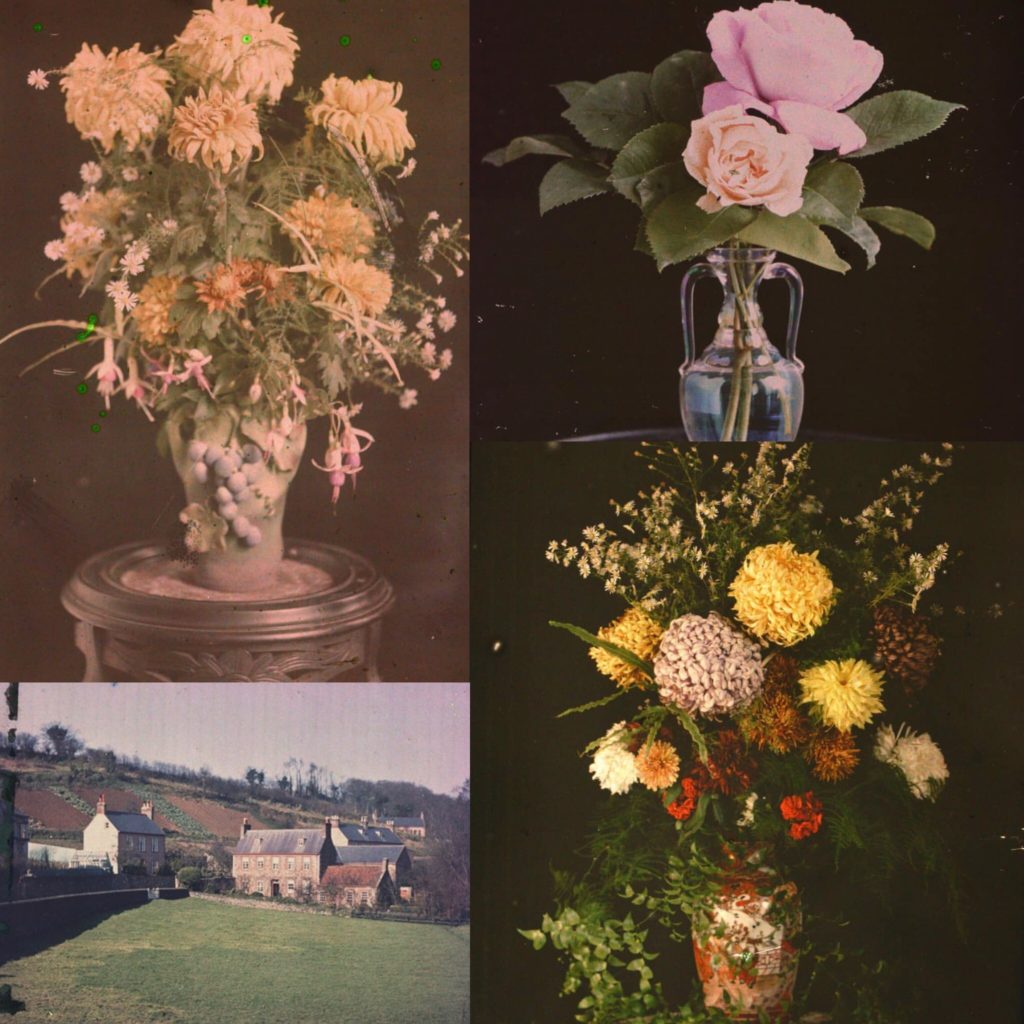Autochrome history
Guiton was the founder of the Jersey photo archive, and he was also a prominent figure in establishing colour photography in Jersey, through using autochrome plates.

The autochrome process my created by the Lumiere brothers; Auguste and Louis in France. Autochrome plates allowed colour photography to be created. These plates were cover in microscopically small pieces of potato starch. When the light passes through, it mixes with the emulsion to create a full colour copy of the photographed scene. The grains of starch were separated into different groups to be dyed red, green and violet. All the different colored grains were then mixed together and put over a glass plate to finally be coated with varnish. Charcoal powder was then added onto the plate to fill in any gaps left by the colored grains. These plates could be used on regular cameras, no extra equipment was necessary.
When placing the plates in the camera, the plain glass side of the plate had to be facing the lens so that the light could pass through before reaching the emulsion. When using these plates, exposure time had to be slight higher, about thirty times longer than black and white plates. The complex manufacturing process of these plates meant that they were more expensive, which limited it to only certain people.
Autochrome plates were also harder to be able to display, for personal viewing it was possible to just hold them up to the light, however when it came to displaying them for others a stand was used in combination with a mirror, or they could also be projected using a magic lantern.
